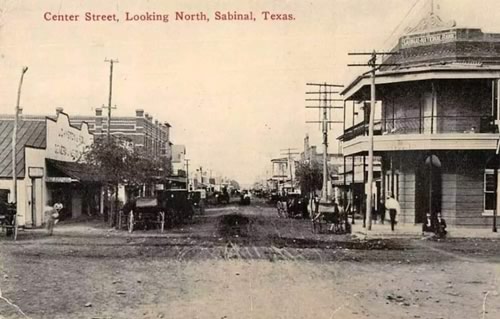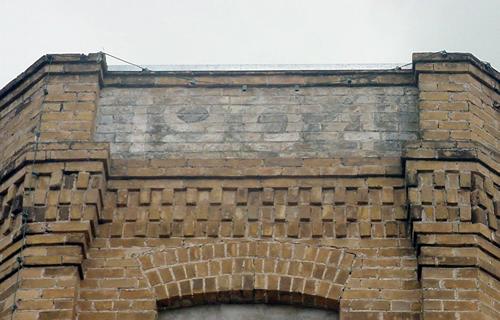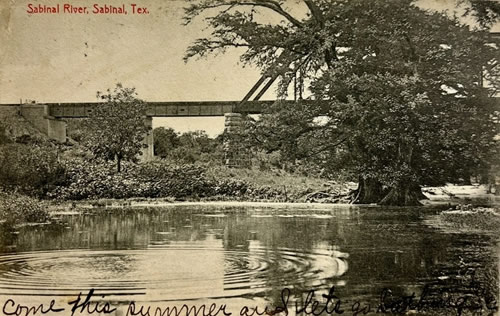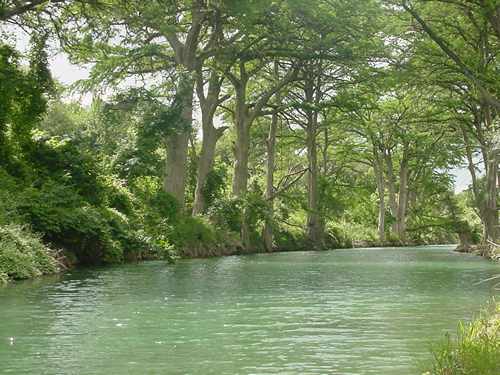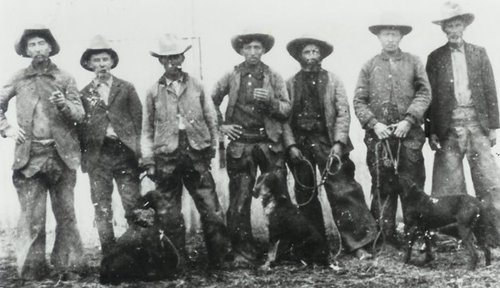Sabinal TX, Uvalde County. (original) (raw)
Arrival of Mohair in Sabinal, showing Center Street with bank building and Johnston & Reily General Merchandise, Postmarked 1909
Click on image to enlarge
Postcard courtesy Dan Whatley Collection
History in a Pecan Shell
Thomas B. Hammer is credited as being the first settler in the area. Hammer opened a stage stop on the eastside of the Sabinal River around 1854 and when a post office was granted the same year the town was designated Hammer�s Station. A Cavalry outpost was established in 1856 on the west bank of the river for the settlers protection. The camp�s presence, however, didn�t intimidate the bandits that killed Hammer in 1857.
Sabinal got a railroad (Southern Pacific) connection in 1881� the same year that Turkish Angora goats were introduced. In 1893 the town had two hotels and the population was reported as 150 for 1884 � not bad for the era.
By 1906, the year the town incorporated, 500 Sabinalistas called the place home. Irrigation for cotton crops was provided by the lumberyard�s windmill and enough cotton was produced to keep six gins in operation. Wool and mohair production were important economic mainstays.
Water and fire departments were established and telephone service began � all in the magic year of 1906. By 1911, the population had swelled to an estimated 1,500 � and those who could read, read The Sentinel - the town�s own weekly newspaper.
A school specifically for Hispanics was opened in the mid 1930s. With schools consolidations, a new elementary and high school were built in town. Five school buses fanned out daily to gather students over the district�s 356 mile territory.
The population reached its zenith in the mid-1950s, with about 2,300 people, but it had declined to 1,570 by 1974 By 1990 the estimated population was about the same.
Center Street, Looking North, showing bank building
Postmarked 1912
Click on image to enlarge
Postcard courtesy Dan Whatley Collection

Bank Building in Sabinal today
TE photo 4-04
Historical Marker: (On US 90, 0.5 mile E of Hwy 127/FM 187
Sabinal
Named by Spanish for Rio Sabina and Cypress trees along river. Town founded in 1854 by Thomas B. Hammer who operated a stage shop and was first postmaster. Despite Indian depredations, town thrived as settlers built homes, and a railroad reached here in 1881. In 1906, town was incorporated. Telephone service started. City water works and volunteer fire department organized. In 1907, Sabinal Christian College was founded. Closed in 1917. Cotton industry was foremost in early 1900's. Today, farming and ranching flourishing in community.
(1967)
Sabinal, Texas Landmarks
Photo Gallery
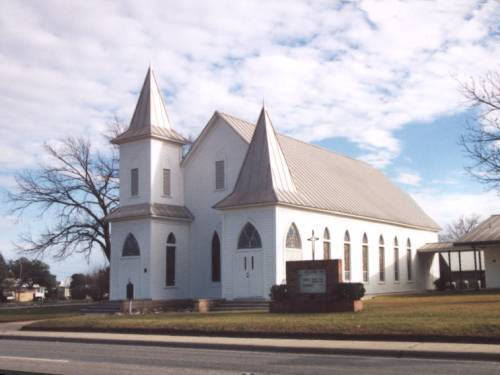
Historical Marker: US 90, east city limits
Sabinal Methodist Church
This church began in 1876 as part of the Sabinal circuit assigned to the Rev. Henry T. Hill. Circuit ministers served the fellowship until 1900, when it became an organized congregation. Services were held in the Christian and Baptist church buildings until the present structure was completed in 1907. For a time pastors at Sabinal Methodist Church also served new rural congregations in Trio and Knippa. As the membership grew and church programs expanded to meet the needs of the community, additions were made to the church facility.
1983
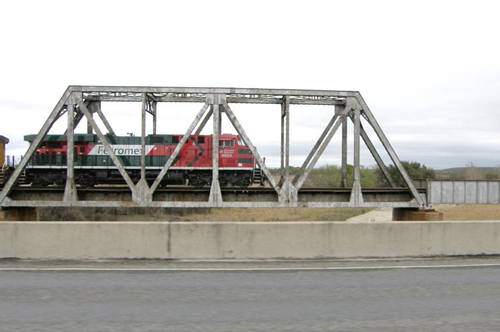
Railroad Bridge West of Sabinal Texas
Photo courtesy Barclay Gibson, March 2008
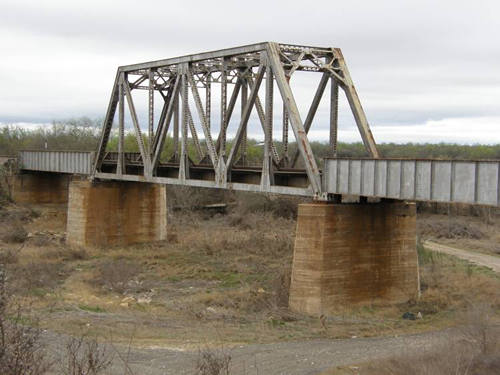
Sabinal River
The Sabinal River which flows from springs north of Vanderpool (Bandera County) continues past Sabinal to the west of town and eventually joins the Frio River.
The Sabinal River is only 60 miles long, and for some of its length it flows underground. The Spanish had originally named the river Arroyo de la Soledad, or "Stream of Solitude"
"Arroyo de la Soledad� - AKA Sabinal River
TE photo 4-04
More Texas Rivers

Center Street, Sabinal
Postmarked 1914
Postcard courtesy www.rootsweb.com/ %7Etxpstcrd/
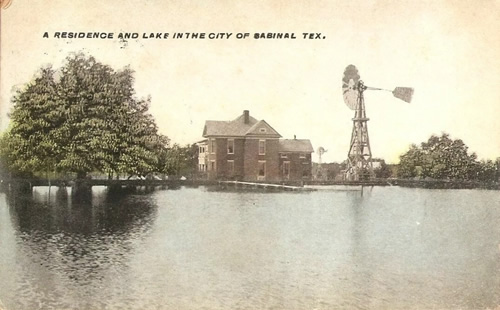
Sabinal, Texas Forum
- "I just love to read Texas Escapes and think about vanished Texas of my childhood. Today I read about Papalote in Bee County. My Bonham grandparents had a farm there. Wolves would get the livestock. My grandfather said Papalote meant windmill.
My grandfather had several farms. The nicest was Sabinal, the beautiful stone house where VP John Nance Garner's wife, Ettie grew up. I lived there too when I was early teenage and the house is magic. Has an historical marker now. We would go to Garner State Park and I still remember how sweet and pure was the air. How fresh and crisp. I could smell the trees." -
Barbara Duvall Wesolek, July 30, 2020
Uvalde County 1920s map showing Sabinal, Sabinal Creek, Frio Rio
East of Uvalde the county seat
From Texas state map #10749
Courtesy Texas General Land Office
Texas Escapes, in its purpose to preserve historic, endangered and vanishing Texas, asks that anyone wishing to share their local history, stories, landmarks and recent or vintage photos, please contact us.

